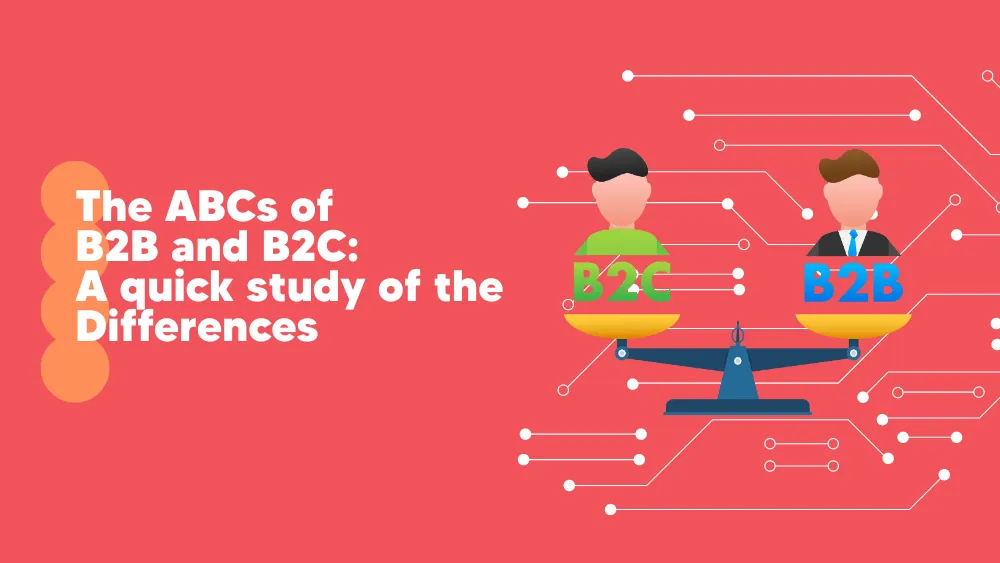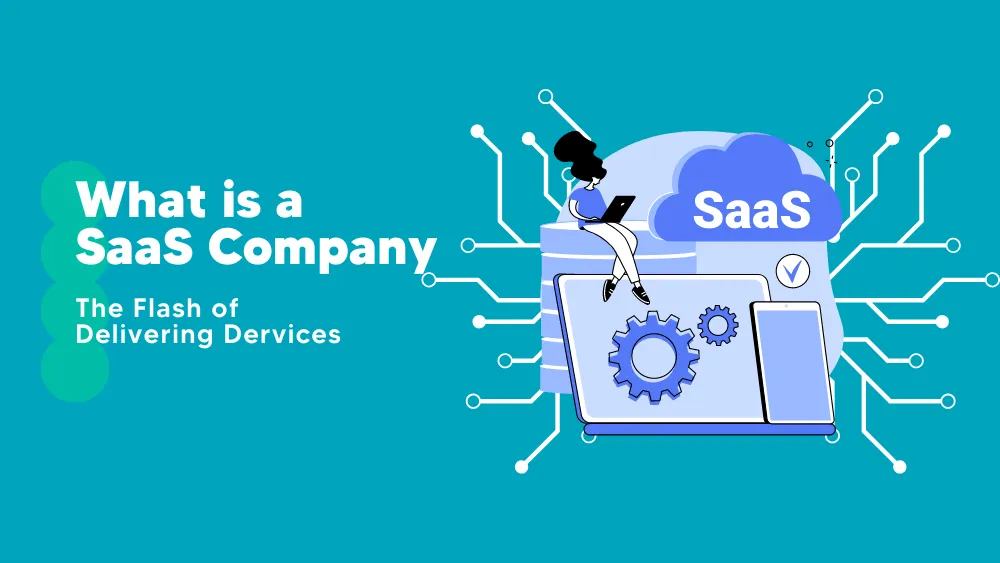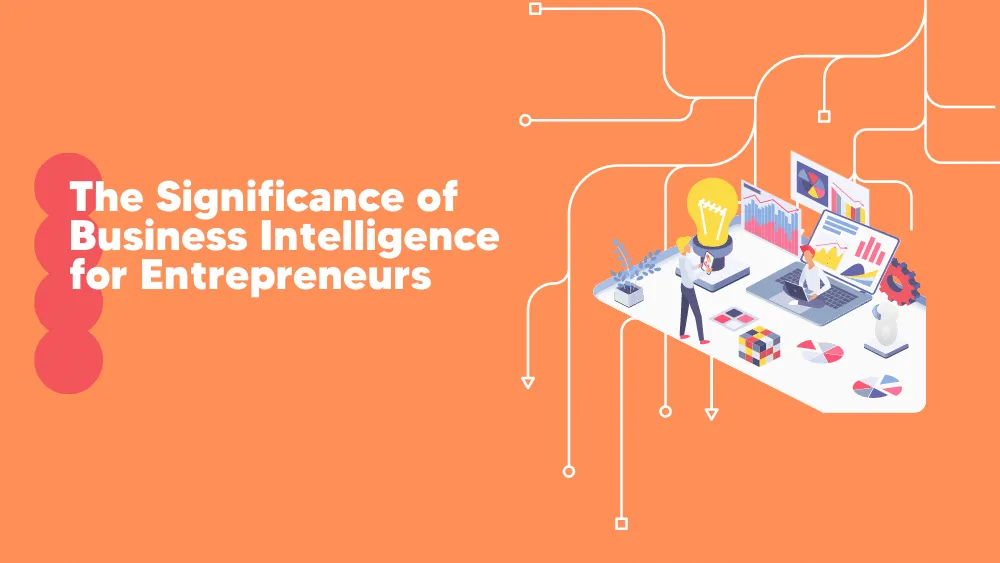Unraveling the business world often brings us face-to-face with puzzling acronyms, two of which are B2B and B2C. They represent different needs of different players in the business arena and understanding that is as essential as knowing the difference between a croissant and a bagel in the world of baked goods. Both are there, and both are lovely, but oh-so-different in texture and taste. Without this in your mind, you might be trying to butter a croissant with a bagel strategy, and we don’t want that.
In this article, we will demystify these business acronyms and clarify the differences between B2B and B2C, and equally important nuances. By grasping these concepts, you’ll be in a prime position to align your strategies with your business model – no culinary confusion here.
We’ll tackle everything from the fundamental definitions, and the art of targeting audiences, to the specifics of product knowledge needs. You’ll gain insights into the buying process and pricing strategies unique to each model, and we’ll even delve into how customer relationships and service vary between B2B and B2C.
Understanding B2B vs. B2C
B2B, or Business-to-Business, as the name would suggest, involves transactions between two businesses. This could involve manufacturers selling to distributors, or a software company selling its products to other businesses. B2B transactions tend to involve complex decision-making processes, lengthier sales cycles, and higher-value transactions. Relationships in the B2B sector are often long-term, with a strong emphasis on trust and reliability.
B2C, or Business-to-Consumer, on the other hand, deals with businesses selling directly to end consumers. This model encompasses your online shopping sprees and your daily coffee runs. Sales cycles in B2C are typically shorter, decisions are made more quickly, and purchases are often driven by individual preferences and emotions rather than strictly business needs.
Targeting Audiences
B2B
When targeting B2B audiences, it’s worth bearing in mind that one’s addressing business professionals. Their decision-making process is primarily driven by logic, facts, and the potential for a significant return on investment. Clarity, efficiency, and practical solutions to concrete problems are their main focus. Their purchasing decisions tend to be methodical, involving several layers of review and approval.
B2B marketing strategies should reflect these realities and emphasize the patience required to navigate industry trends and understand specific business needs. The tactics often lean heavily on educational content and detailed case studies. These are not quick sales; rather, the emphasis is on nurturing long-term relationships.
B2C
B2C audiences, in contrast, are individuals who make purchasing decisions based on a mix of emotional appeal, personal benefits, and sometimes even on a whim. Personal satisfaction and emotional connection with a product or service can tip the scales in your favor.
As such, B2C marketing strategies need to create an emotional connection and do it fast. Tactics often revolve around eye-catching visuals, compelling stories, and the strategic use of various channels such as social media, TV ads, and direct email campaigns. The focus is on making an immediate impact while also building a loyal customer base.
Product Knowledge and Information Needs
B2B
B2B transactions often hinge on profound comprehension of the product or service in question. This clientele demands technical, comprehensive data. They seek insights into system integration, operational expenses, and long-term benefits of their prospective investments.
This requirement shapes the style of B2B marketing. Content such as whitepapers, industry reports, webinars, and instructional guides become indispensable tools. Each presentation, be it a product demonstration or sales proposal, should exhibit in-depth expertise and tangible value. In this way, trust is built, laying a strong foundation for enduring relationships.
B2C
Conversely, B2C consumers typically shy away from intricate details. They are more captivated by the direct benefits of a product. For instance, while they might not care about the manufacturing process of their smartphone, its ability to deliver top-quality photos or its user-friendly interface is of utmost importance.
This preference informs the approach to B2C marketing. The key lies in condensing information and underscoring the immediate advantages. Marketing efforts often include visually enticing ads, relatable endorsements, or lifestyle-centric social media content. The goal is to illustrate how the product aligns with consumers’ lifestyles and addresses their needs in a captivating, relatable, and straightforward manner.
Buying Process and Decision Making
B2B
The purchasing process in B2B dealings can often resemble a marathon rather than a sprint. It’s longer and involves numerous stages from initial contact to final purchase. B2B sales are typically high-value and affect various facets of the business, from operational efficiency to employee productivity. Therefore, the buying decision is rarely made by an individual and more commonly by a committee following a set of established procedures.
Relationship building plays a vital role in B2B sales. Potential customers expect personalized attention and engagement. They require demonstrations of in-depth understanding of their industry, business challenges, and specific needs. The successful B2B seller is one who partners with the client, providing expert advice and solutions tailored to their requirements. It’s not just about a single sale, but cultivating a partnership that grows over time.
B2C
In contrast, the B2C purchasing journey is often swift and simpler. While some purchases involve research and deliberation (think buying a car or home), many are made relatively quickly (like ordering a meal or buying clothes). These transactions are usually lower value, less formal, and driven by individual preferences.
The decision-making process in B2C sales is less complicated than in B2B. Often, the person choosing the product is also the end user. Their choices are influenced by factors such as price, quality, brand reputation, and emotional appeal. While building relationships is still beneficial in B2C marketing, the focus is usually on delivering an enjoyable shopping experience and creating an emotional bond with the brand.
Pricing and Value Considerations
B2B
In B2B transactions, pricing strategies lean towards complexity due to the nature of the products or services involved. Prices are often negotiable and depend on variables such as the volume of the order, length of the contract, and specific service level agreements. It’s not uncommon for two clients to pay different amounts for a similar product or service due to variations in these factors.
Perceived value in B2B transactions is tied to the measurable outcomes the product or service provides. Businesses seek solutions that improve efficiency, reduce costs, or increase revenue. The B2B buyer will often be willing to invest more if they believe the return on investment will be substantial.
B2C
B2C pricing strategies are usually more straightforward and transparent to the consumer. Prices are fixed for all customers, with occasional discounts or sales. Volume discounts do exist in B2C, but they’re not as common or as negotiable as in B2B.
In B2C transactions, perceived value can be more subjective and tied to emotional factors. While the quality, price, and utility of a product are important, the consumer’s personal enjoyment, the prestige of the brand, or the trendiness of the product can also be significant factors. Hence, B2C customers may sometimes be willing to pay more for products or services that satisfy these emotional needs.
Marketing Channels and Tactics
B2B
When it comes to B2B, think professional, targeted, and informative. Channels that work well include LinkedIn for its professional networking, industry-specific publications for their targeted reach, and email marketing for its direct and personal touch. Trade shows, webinars, and educational events also play a pivotal role, serving as platforms for relationship-building and detailed product showcasing.
B2B marketing tactics are more about creating value and trust. There’s a focus on thought leadership—demonstrating the company’s depth of knowledge, understanding of industry trends, and its ability to provide effective solutions. Tactics often involve content marketing, search engine optimization (SEO), and targeted advertising, all aimed at showing the right information to the right decision-makers at the right time.
B2C
For B2C, think broad, engaging, and emotional. Social media platforms like Instagram, Facebook, or TikTok are highly effective for their vast reach and visual storytelling capabilities. Television and radio, despite being traditional mediums, still hold sway for certain demographic groups. Direct email campaigns and influencer collaborations also work well for personalized and peer-influenced marketing, respectively.
B2C marketing tactics are designed to engage, entertain, and inspire action. They might involve vibrant visual ads, user-generated content, influencer partnerships, or even immersive experiences with augmented or virtual reality. The aim is to create a connection with the brand that resonates on a personal level, leading to customer loyalty and repeat business.
Customer Relationships and Service
B2B
In the B2B realm, it’s all about harmony over time. They tend to be long-term and highly personalized, shaped by ongoing communications and interactions. Given the high stakes involved, the focus is on building trust, understanding unique business needs, and providing customized solutions.
Customer service in B2B is crucial and complex. It often involves dedicated account managers, extensive product training, technical support, and regular check-ins. The goal is to ensure that the client is not only satisfied with the product or service but also feels supported and valued throughout their journey.
B2C
B2C relationships, on the other hand, are usually less personalized and more transient, considering the volume of customers and the nature of purchases. That doesn’t mean they are less important. In fact, a good relationship can result in loyal customers who make repeat purchases and recommend the brand to others.
Customer service in B2C is all about efficiency, accessibility, and problem resolution. Whether it’s through phone support, live chat, or social media, the emphasis is on addressing customer queries or issues quickly and effectively. A positive customer service experience can enhance the overall perception of the brand and increase customer retention.
Case Studies – the ones who did it just right
B2B – Slack
A standout in the realm of B2B is the communication platform, Slack. Its strategy revolves around solving a real business problem: efficient internal communication. They capitalized on the need for businesses to streamline their internal conversations and to centralize their communications in one place. Slack’s successful tactics include providing robust knowledge resources, effective customer support, and constant product improvement. But the masterstroke lies in offering a freemium version. This allows businesses to try the platform without risk, leading to conversions and upgrades to paid plans.
Slack’s methods are unlikely to replicate success in B2C, as the needs and purchasing behaviors differ vastly. A B2C consumer may not require or appreciate the in-depth, technical resources that Slack provides (nor would they need a platform designed for business communication).
B2C – Coca-Cola
On the B2C front, few companies shine brighter than Coca-Cola. Coca-Cola’s strategy is simple yet effective: create an emotional bond with consumers. Through its iconic, heartwarming commercials and savvy social media presence, Coca-Cola has positioned itself as a symbol of joy and unity.
Key to Coca-Cola’s success is its ability to create universal appeal, engender a sense of belonging, and evoke strong emotions that resonate with consumers globally. The company ensures high visibility through aggressive advertising across various channels – TV, billboards, social media, and even product placement in movies and shows.
Transposing Coca-Cola’s strategy to a B2B scenario could prove challenging. The broad emotional appeal that works for individual consumers is less likely to sway a company’s procurement committee, who may be more focused on the tangible value and return on investment.
Conclusion
Understanding the unique aspects of B2B and B2C is fundamental in the business world. These two markets differ vastly in areas like audience targeting, information needs, decision-making processes, and pricing strategies.
B2B is more about complex, long-term relationships, focusing on detailed and professional communication. On the other hand, B2C is driven by quick, emotional connections and personal benefits, using broad and engaging marketing strategies.
Recognizing these differences is key. It enables businesses to craft strategies that align with their specific model and audience needs. Whether your focus is B2B or B2C, tailoring your tactics to match your marketplace’s dynamics can lead to delivering value and achieving business success.







